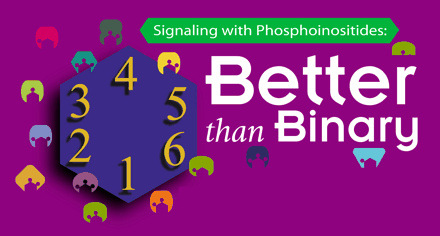Signaling with Phosphoinositides: Better than Binary
- Department of Pharmacology and Molecular Biology Program University of Colorado Health Sciences Center 4200 East Ninth Avenue, Denver, Co 80262
- Address correspondence to MO. E-mail Michael.Overduin{at}UCHSC.edu; fax 303-315-7097.
Abstract
When the outside of cell is stimulated,the inside generates a flurry of signals.Phosphates are sprinkled over lipids and proteins,where they are recognized within diverse signaling pathways.The kinases that congregate beneath the cell surface to provide the phosphate tags that mediate signaling have become major targets of new wave of drug design. Phosphoinositide signaling presents a particularly intriguing network whose many mysteries are now being unlocked.Research into protein domains that specifically recognize phosphoinositides have established the ENTH, FYVE,Phox,and pleckstrin homology domains s four cornerstones of phosphoinositide signaling.

The phosphorylation of proteins has long been regarded as the star mechanism of signal transduction. So, why focus on the
phosphorylation of phosphoinositides? Basically, because they're better than binary: The inositol ring of the phosphoinositide
head group offers multiple options for modification-and thus multiple options for recognition by the cell signaling network.
- © American Society for Pharmacology and Experimental Theraputics 2001



